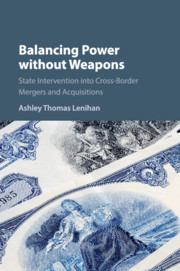Appendix F: Negative Case Selection
In Chapter 6, four negative cases were chosen for study on the basis of insights from Mahoney and Goertz's “Possibility Principle” (see Mahoney & Goertz Reference Mahoney and Goertz2004; Skocpol Reference Skocpol and Skocpol1984). These scholars’ approaches needed to be slightly adapted, because of the probabilistic nature of this study's hypotheses and the use of continuous independent variables.
First, Mahoney and Goertz's Possibility Principle offers some “ideal” guidelines for case selection, but these are not always practical or practicable for all forms of inquiry. The Possibility Principle posits that “only cases where the outcome of interest is possible should be included in the set of negative cases; cases where the outcome is impossible should be relegated to a set of uninformative and hence irrelevant observations” (Mahoney & Goertz Reference Mahoney and Goertz2004, 653). Yet, this methodology is most useful for those using typological theory or Boolean algebra, rather than the type of probabilistic theory employed in this study (Mahoney & Goertz Reference Mahoney and Goertz2004, 654).
Furthermore, their approach is ideal for research that primarily employs dichotomous variables, which this work does not – and their method for selecting “relevant cases” on the basis of continuous variables is problematic. They argue that “the analyst” should examine the range of each independent variable from the minimum to the maximum, and for each variable “must [then] decide and justify the exact threshold or cutoff point at which the outcome is considered possible” (Mahoney & Goertz Reference Mahoney and Goertz2004, 659). “In practice,” they claim,
one often sets this threshold at a fairly high level (e.g., >.50 [assuming a variable that is continuous from 0 to 1]) to ensure that at least one variable is clearly present in all cases. Under some circumstances, however, the analyst may be better served by intentionally setting the threshold at a lower level. This is especially true if the analyst has good reason to believe that the higher threshold will exclude too many cases as irrelevant
In other words, the application of the principle to continuous variables requires that the author make a subjective choice about the level at which each variable can be considered to have reached a threshold beyond which the hypothesized outcome will be affected. Such subjective choices are always open to counterargument, and are even more difficult to make when more than one outcome must be taken into consideration. This author set the threshold first at the median value of each independent variable (because the variables used in this dataset do not all have a 0–1 range, this was considered the closest approximation to the “>.50” advised level), and then again at the average value of each. Each threshold is high, but still only a negligible number of cases could be dismissed as “irrelevant” in this manner. This is likely because the population of cases has already been well defined by sector and size. Setting the threshold any higher would unnecessarily exclude cases as “irrelevant” that might not be.
Furthermore, Mahoney and Goertz argue that irrelevant cases should be extracted from the sample of cases studied, primarily because their inclusion increases the potential that the true significance of the relationship between the variables will be hidden, or deflated (Mahoney & Goertz Reference Mahoney and Goertz2004, 654). Yet, if the relationship still shines through with a certain degree of clarity, this is not necessarily as great a problem as if the relationship were inflated. In other words, “irrelevant” cases might make the researcher's job harder, but this certainly doesn't detract from any significant relationships between the dependent and independent variables that are found. It only implies that those relationships might be even stronger than they appear. Finally, by asking the researcher to make subjective decisions that affect the “relevant”/“irrelevant” divide within a case universe, Mahoney and Goertz's approach may actually hide some vital and interesting observations that can be drawn from a population of “negative” cases. Populations that haven't been parsed in such a manner may offer valuable insights both for a particular hypothesis, and for the building of the greater theory surrounding it.
What is important, however, is the basic argument on the part of Mahoney and Goertz that negative cases should be selected on the basis that they exhibit similar values on the independent variables to “positive cases,” and that the positive outcome was therefore “possible” in these cases (see Mahoney & Goertz Reference Mahoney and Goertz2004, 653–4). Thus, having excluded the “irrelevant” using possibility principle, the key is to make a determination concerning which cases within the population are most relevant. As the approach taken within this study is a probabilistic one, the threshold values set earlier can be used in conjunction with qualitative data on the variables to show which cases were most likely to have had a positive outcome (i.e., which had the highest presence of economic nationalism and/or geopolitical competition concerns). A random sample of four was chosen from among these cases. In summary, then, each of the four cases discussed in Chapter 6 could have resulted in a positive outcome (i.e., bounded or unbounded intervention), because of the presence of a high level of economic nationalism and/or geopolitical competition, but did not, and can therefore be considered “relevant” for the purposes of hypothesis testing according to the Possibility Principle.
